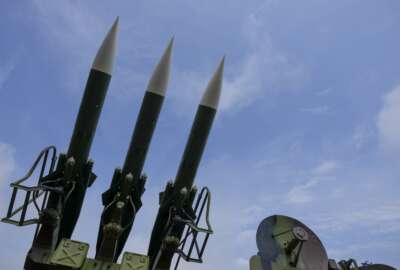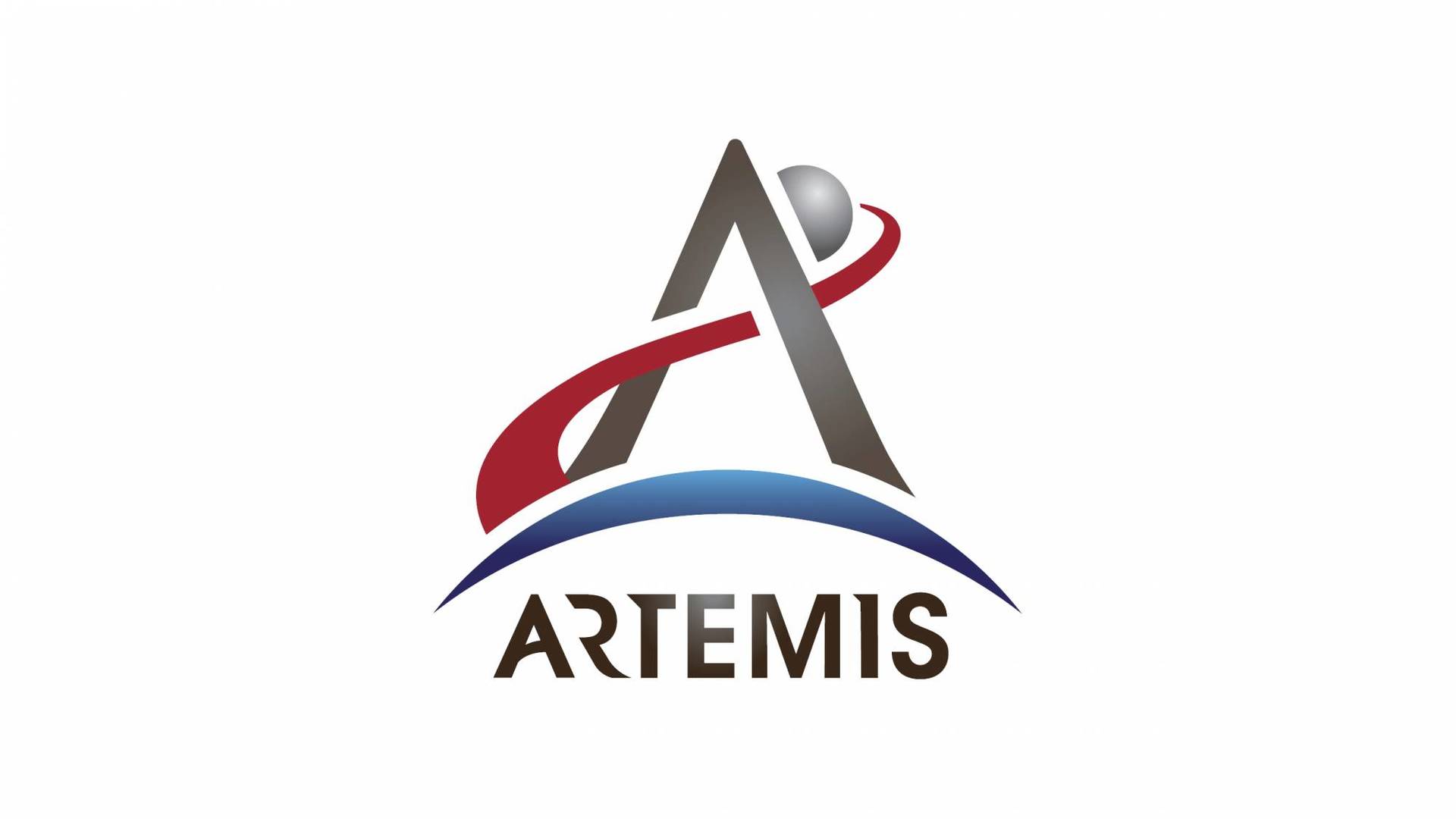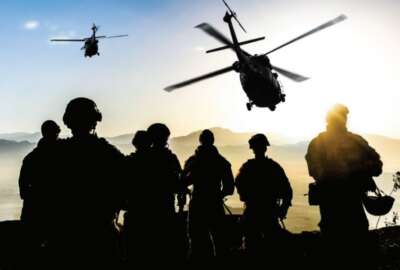A new way to pay for innovation takes off for the Air Force
"We help focus Air Force efforts on institutional competitiveness and infusing that sense of urgency," said Mary Hossier.
When the government wants innovation, it often has to pay for it. Now the Air Force has reorganized how it pays for disruptive technology. It launched a group it calls a Squadron Innovation Fund Marketplace officials say will revolutionize things. The director of innovation for the chief of staff of the Air Force Strategic Studies Group, Mary Hossier joined the Federal Drive with Tom Temin to discuss more.
Interview transcript:
Tom Temin All right. Let’s talk about the Air Force Strategic Studies Group. Where does that live in the Air Force to start with? And then we’ll get down to this new program.
Mary Hossier Sure. The Strategic Studies Group is a think tank to the chief of staff and the vice chief of staff at the Air Force. So we help focus Air Force efforts on institutional competitiveness and infusing that sense of urgency into a number of our efforts that are directed by the chief and the vice chief of staff.
Tom Temin Ok. And now let’s talk about the Squadron Innovation Fund marketplace. What is that and where does that fit in?
Mary Hossier So the background on Squadron Innovation Funds stem from two chief of staff ago, General Goldfein. And one of the taglines to use in the Strategic Space Group is that the way the Air Force expresses strategy is resourcing. And so we think airmen innovation is a strategically important avenue. And the way that we help incentivize that is to put funds behind it. So General Goldfein, one of his initiatives was to revitalize the squadron. And so he recognized that one of the gaps for innovation, specifically at the squadron level, was resourcing. Not to get to Schoolhouse Rock on how a bill becomes a law with colors of money. But much of the money at those squadron level is largely spoken for by other mission requirements. So by sending this unique line of funding down to the squadron, it gives commanders some of that latitude to put funds towards disruptive, innovative ideas. When we were looking at that model, what we found was oftentimes there wasn’t enough funding to help accelerate some of our most promising ideas. And so we redesigned the squadron innovation fund construct to be more of a marketplace, which is more of a central repository where commanders are able to view those disruptive ideas from wherever they come in the Air Force, and vote using tokens on what they find to be most compelling so that we can fully fund the most promising ideas.
Tom Temin Well, what are some examples of ideas that would revitalize the squadron that the colors of money available don’t necessarily cover? What are they trying to do with the squadron?
Mary Hossier So often I’ll say, I can give a few examples of some, but some of those are when they are more forward looking and it’s trying to leverage more cutting edge technology that hasn’t gotten fully institutionalized. So this allows squadrons to get into a little bit more prototyping. Some of those examples include leveraging artificial intelligence for things like equipment tracking or contract submittal storage systems, as well as certain concepts, with respect to a war fighting concept we have called Agile combat employment. So it’s a pretty wide span of concepts. But there are things that the institution hasn’t quite caught up to yet from a funding perspective.
Tom Temin Because my understanding of some of the challenges at the squadron level is maintenance keeping all of the flying assets airworthy. That’s a kind of a readiness issue across the Air Force, but maybe a lot of the work is executed at the squadron level. Would that be a good example.
Mary Hossier So that I can’t speak to in that level of detail. I will say looking at, from the beta tests, some of those ideas were more, they were beyond that element of it. So that might be something that the maintenance enterprise is looking at. But I’d say that’s probably more from the institutional lens than some of the disruptive technology.
Tom Temin We’re speaking with Mary Hosier. She’s the chief of staff of the Air Force Strategic Studies Group. And also we’re talking about the Squadron Innovation Fund marketplace. And when something is discovered that this marketplace could fund and bring to bear on the squadron, does that mean that it comes to all of the squadrons across the Air Force, or is it limited to a particular squadron that has an idea?
Mary Hossier So for the first iteration, what the commanders specifically are voting on are an idea that could be implemented either at an individual squadron or if the airman is suggesting a broader sweeping concept potentially for use more broadly. But typically in that first version, it would be at the squadron who submits that idea.
Tom Temin Because not every squadron is the same. Some of them don’t fly at all. There might be a health squadron.
Mary Hossier Correct. And so what this allows is, to use your example of maintenance, our maintenance airmen are incredibly innovative. And what’s neat is an airman at a maintenance squadron in England could submit a concept that a maintenance commander in Arizona looks at and says, Man, that’s a really promising idea. I think that holds a lot of promise for the institution. I’m going to vote on it, even though it won’t necessarily impact my squadron immediately in Arizona. But I think it’s really important. So let’s let England beta test it and we can try to benchmark this for every maintenance squadron. And that’s just one example. But it could be any part of our enterprise with similar missions could eventually benefit from these more disruptive concepts that are moving that operational mission forward.
Tom Temin And when you say maintenance, that means maintenance of the airplanes.
Mary Hossier Aircraft maintenance.
Tom Temin So artificial intelligence we hear widely is people are searching for ways to have better prediction so that they can focus maintenance and preventive maintenance before something breaks. And all of this across industries, not just flying and so on. That’s the kind of thing, though, that you might be checking out.
Mary Hossier Absolutely.
Tom Temin And where do the ideas originate?
Mary Hossier So they originate from our airmen, those airmen who are on the front lines doing the mission every day and are encountering challenges and say, I think I’ve got a solution to this challenge. And we are able to help connect them to the broader innovation ecosystem. And we have a number of innovation cells that are at individual bases. And they can help develop and give that airmen the fundamentals to take that idea and to proliferate it, to then submit to the Squadron Innovation Fund marketplace and get funded.
Tom Temin And the Squadron Innovation Fund marketplace itself has to be funded. Where does that originate?
Mary Hossier So it comes from the headquarters level.
Tom Temin In other words, they set aside a certain amount. What kinds of money are we talking about? Just orders of magnitude. Is it millions, tens of millions?
Mary Hossier A few millions.
Tom Temin Right. Ok. So these are, again, things that can be done at low cost and fairly rapidly, it sounds like is the space you’re operating in.
Mary Hossier That’s exactly right.
Tom Temin And is there a mechanism for contractors or would be contractors to compete for these? Once you say this looks promising?
Mary Hossier Not at this time. We do have a rapid acquisition and technologist innovation cell called Upwork’s, who works very close with small business innovative research. That’s normally our contractor interface and typically the airmen and we’ll partner with Aph works if they’re looking for a particular vendor. They know they’ve got a problem and they’re looking for who has a similar solution to kind of do some of that matching. But contractors would not have direct access to the Squadron Innovation Fund marketplace.
Tom Temin And is the challenge competition mechanism part of this at all.
Mary Hossier In this one, the only competition element is for, commander’s attention and resources. So those tokens that I reference, they’re worth $100 each. Those are kind of fair, shared out based on unit size. So that gives commanders varying buying power, as it were. But really it depends on year to year, how many ideas get submitted. And so conceptually, if all the ideas are mature and valuable and there’s enough funds to cover all of them, they could all get covered. If we run into a problem where we get too many great ideas, and then obviously just the finite nature of resources would limit who could come out the quote unquote winner of that. But that’s an excellent problem for us to solve. And we would try to work with those airmen across the institution to try to find other lines of funding to accelerate those ideas.
Tom Temin And by the way, the tokens aren’t actual physical coins, are they?
Mary Hossier They’re not, they’re digital.
Tom Temin All right. Good. While you’re ahead on that front, anyway, fair to say.
Mary Hossier I’m really excited. I came to this position out of command, and this was certainly one of the things I saw at the command level where airmen were coming up with ideas. But commanders didn’t individually always have the funds to be able to resource those ideas. And so one of my airmen came up with a great idea, and I had to work with other commanders to try to pool some of our funding to help get that idea resourced. And so it’s really encouraging to see that a operational challenge I faced in command is now getting solved at the institutional level to where those good ideas can shine and our airmen can feel empowered because airman innovation is so crucial to developing that sense of urgency to meet our peacetime threat.
Copyright © 2025 Federal News Network. All rights reserved. This website is not intended for users located within the European Economic Area.
Tom Temin is host of the Federal Drive and has been providing insight on federal technology and management issues for more than 30 years.
Follow @tteminWFED






